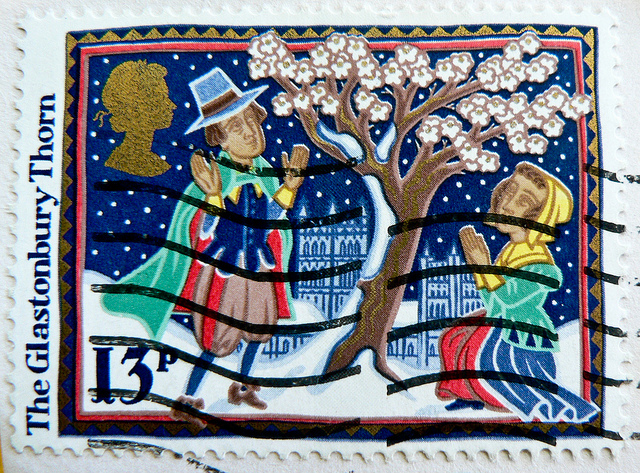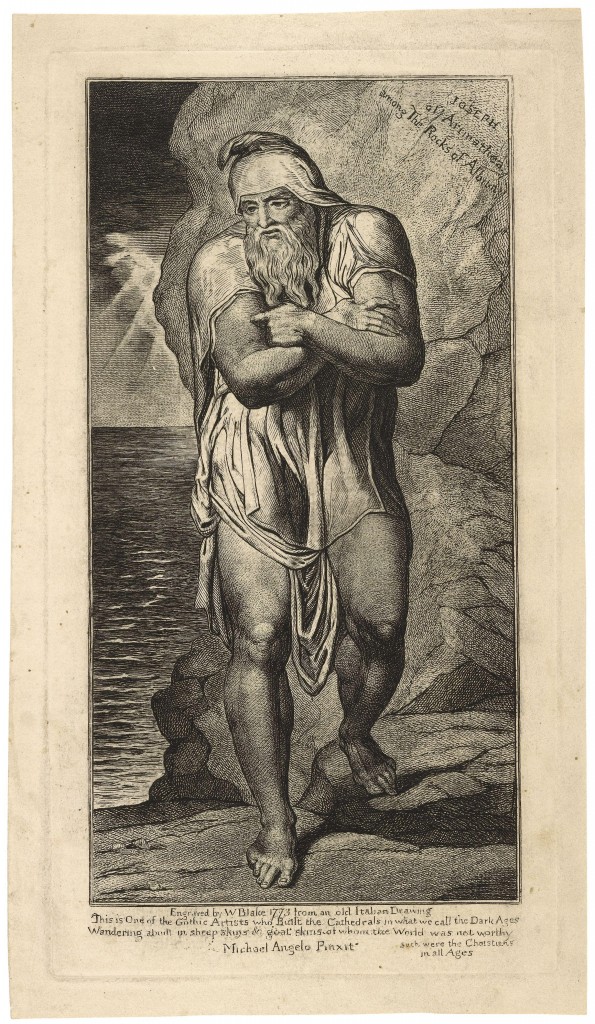
The 1986 Christmas Stamp of the Glastonbury Thorn
That’s the legend anyways. Few people know that England’s de facto National Anthem Jerusalem is based on that very question. Here is the first stanza speaking of Jesus ( the “Lamb of God”) :
And did those feet in ancient time.
Walk upon England’s mountains green:
And was the holy Lamb of God,
On England’s pleasant pastures seen?
Artist and poet, William Blake, wrote the poem, And Did Those Feet In Ancient Time? in 1808. Over a hundred years later, in 1916, England’s poet laureate, Robert Bridges, plucked the poem from its bin of historical obscurity for a collection of British poetry. Composer Hubert Parry in the same year set the poem to music. It has been known as “Jerusalem” ever since.
The song has since become a staple of modern British culture, sung at the recent Royal Wedding and at the funeral of Princess Diana, It has been featured in a number of movies and television works, including the Academy Award winning picture, Chariots of Fire The picture derives it name from the celebrated chorus in the song.
Bring me my Bow of burning gold;
Bring me my Arrows of desire:
Bring me my Spear: O clouds unfold!
Bring me my Chariot of fire!
Few people, even few Brits, realize that this song celebrates the mythology that Jesus as a young boy traveled to England. This trip was made with his uncle, Joseph of Arimathea, a tin merchant and Mary’s brother. This was a business trip to England. The only mentions of Joseph of Arimathea in the Bible are in association with providing the tomb for Jesus’ body. The Bible is largely silent on Jesus from childhood to public ministry.
This legend, and it is unsubstantiated history, has been alive for almost 2000 years. Further legend believes that Joseph of Arimathea returned after the death of Jesus and started the first “cristen” church of England in the village of Glastonbury around 60 A D.
The myth purports that Joseph decided upon Glastonbury because when he put his staff into the ground on Wearyall Hill, it took root and flowered. This tree is known as the Glastonbury Thorn . A descendant of that first tree still stands and blooms small white flowers twice a year. One of the flowerings happens, some say “miraculously, ” around Christmastime.
For the last hundred years, it has been a royal tradition for the King or Queen of England’s family to celebrate Christmas dinner with a bough of blooms from the Glastonbury Thorn on the table. The bough is cut every year at Christmastime by the oldest child in the second grade in the Glastonbury school system.

Engraving by William Blake (1773) – Joseph of Arimathea on the Rocks of Albion. Depiction of Joseph is Herculean.







